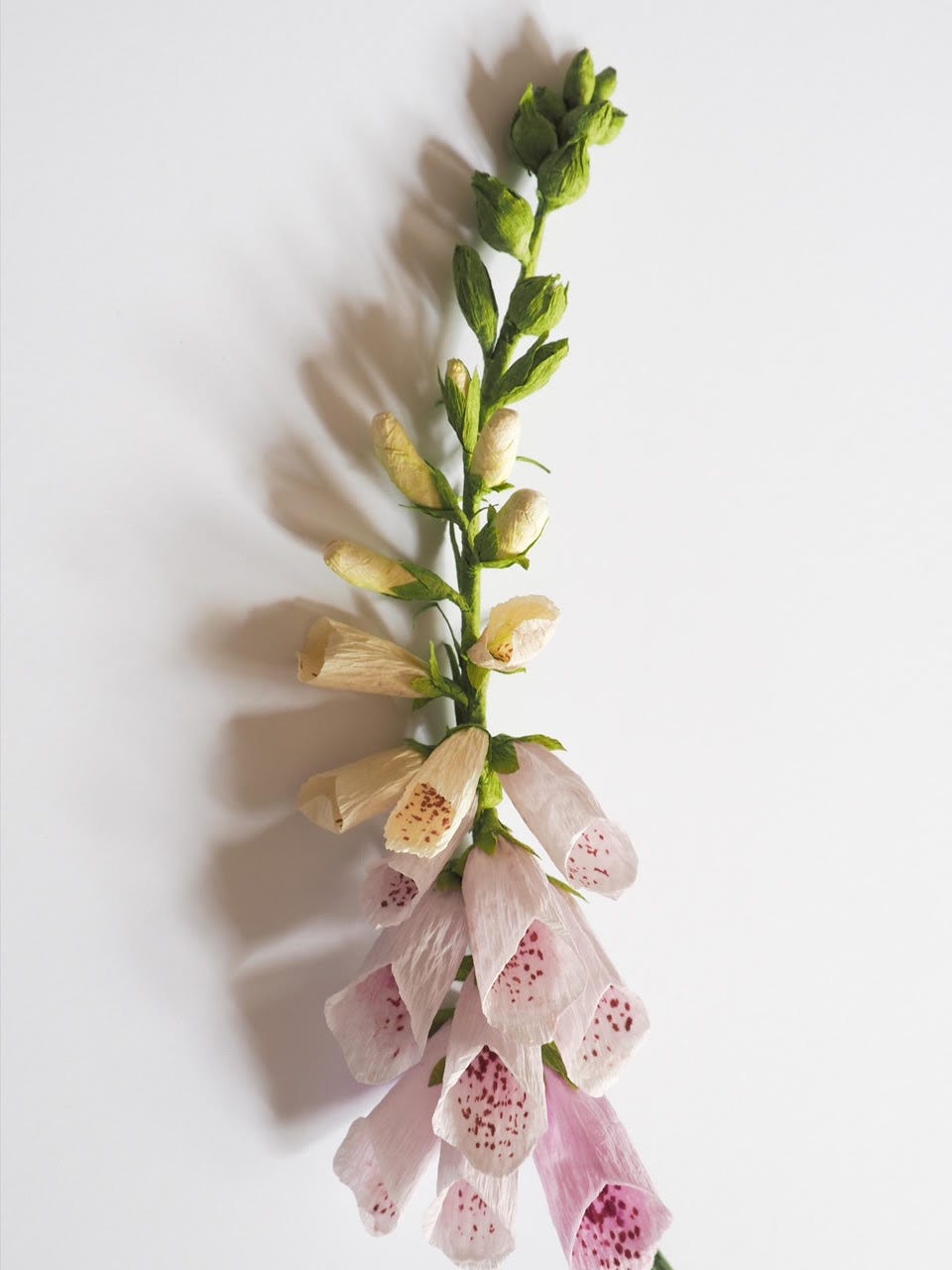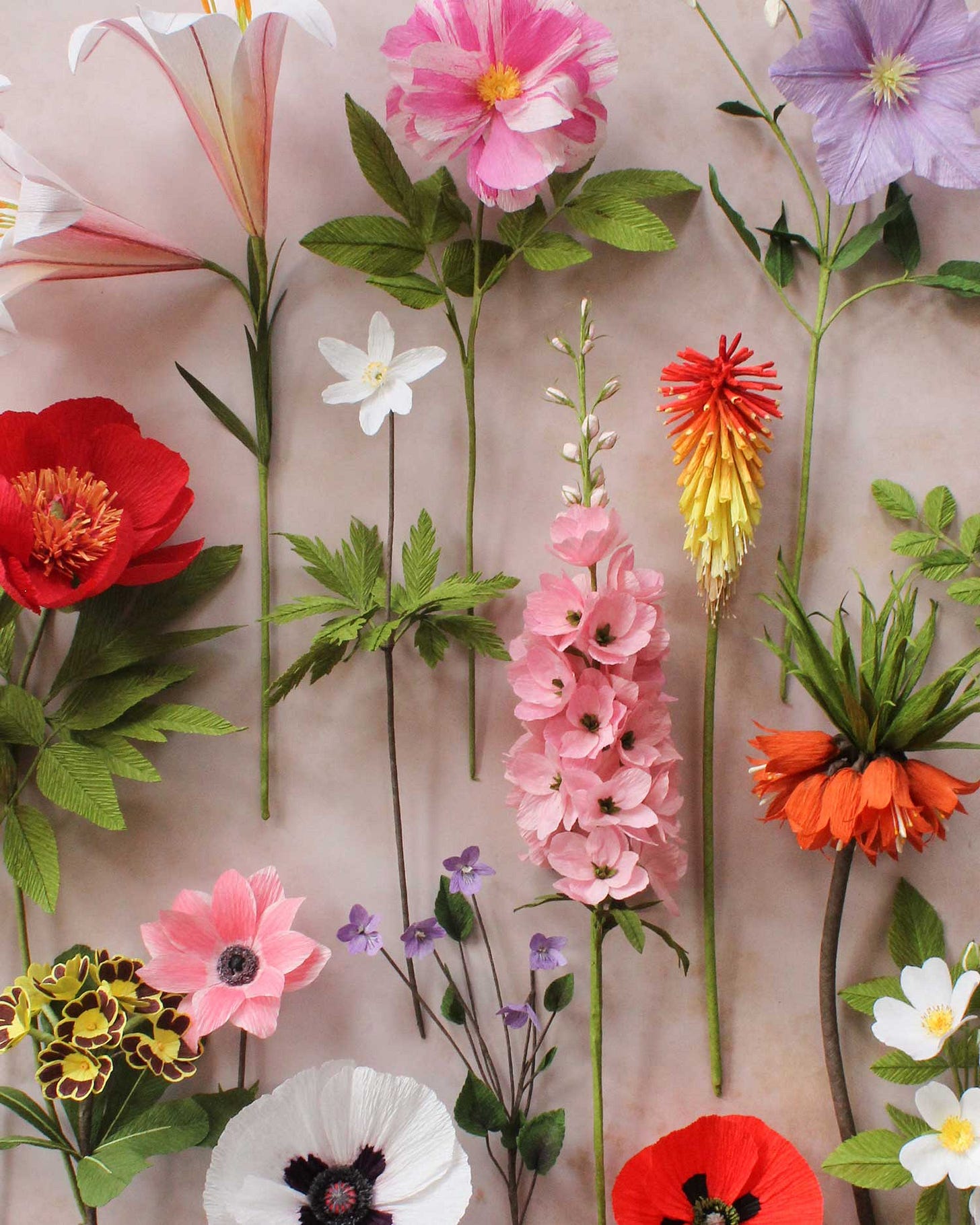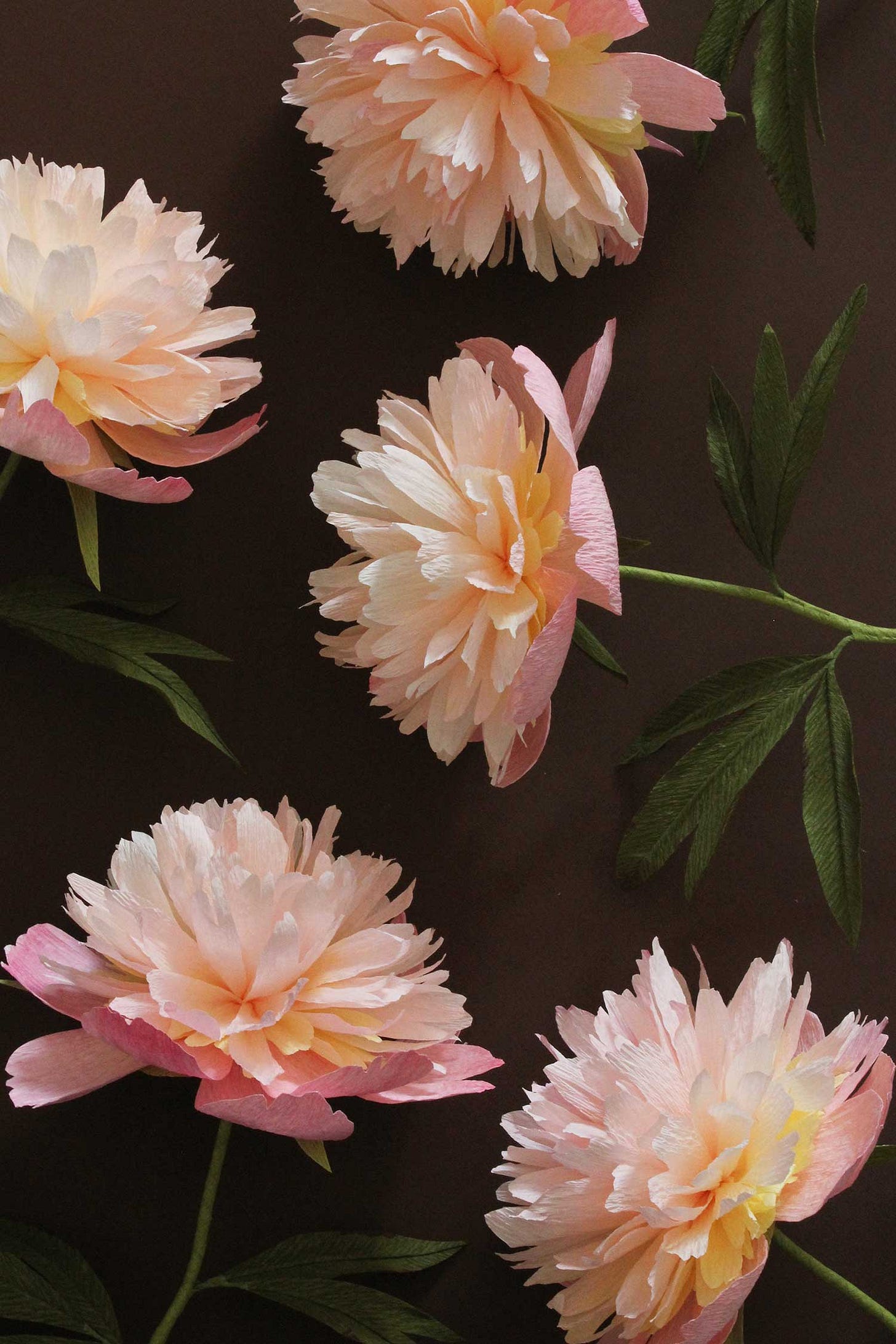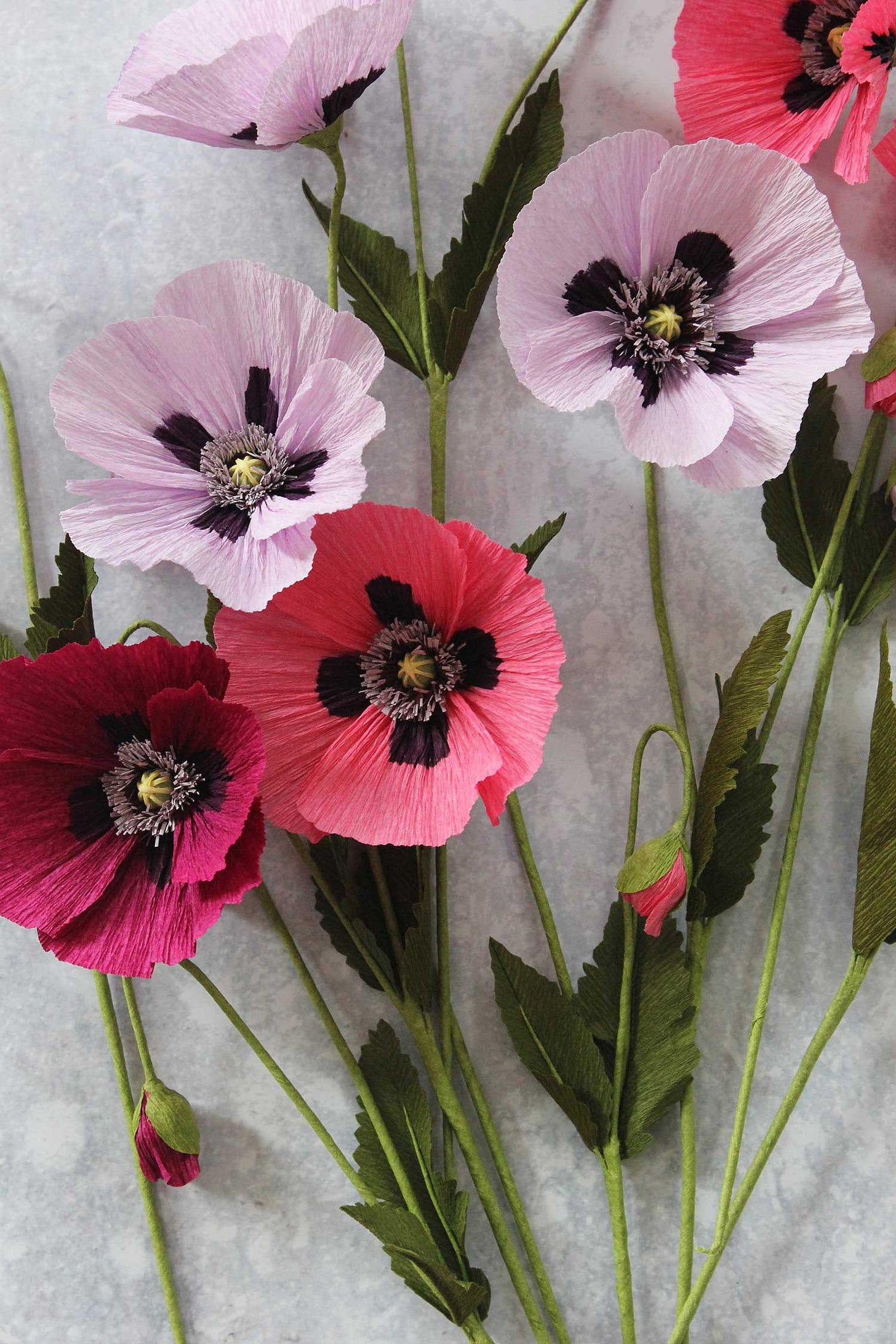The Q&A: Susan Beech, paper flowers as fine art
Forget everything you thought you knew about faux flowers – these paper wonders are like nothing you've seen
You’re reading The Earthworm, a newsletter that takes a sideways look at the world of gardens, gardening, horticulture and all that good green stuff. If this is your first time here, you can catch up on anything you’ve missed by following this link. Subscribe now for free and join the community!
I’ve always had mixed feelings about artificial plants and fake flowers. I mean, the clue is in the name, right? It’s hard to think of an example where the word “fake” is used to describe an improvement on an original.
And yes, I have seen some dumbfoundingly awful examples in my time. There’s a new-build development between our home and the nearest underground station. It’s a mid-rise tower block with an open, glass-walled lobby. For several hours each day, sunlight floods in through the floor-to-ceiling glazing. And yet the room is full of jumbo-sized plastic houseplant knockoffs, each a more sickly, more lurid shade of green than the last.
Natural houseplants can purify the air in your home, and lend a sense of stillness, of tranquillity to an interior space. They can create a calming facsimile of the natural environment in even the dreariest of urban interiors. A plastic houseplant does the exact opposite, serving as a permanent dusty reminder of the absence of nature from our lives.
Then again, we can be a little hasty when throwing the word “fake” around. When van Gogh painted his sunflowers, were they described as fakes? Were Monet’s waterlilies at Giverny fakes too? Why is it that a flower reproduced using oils-on-canvas is considered fine art, whereas one fashioned from silk is reduced to “arts & crafts” or, worse still, snobbily dismissed as a fake?
And that’s without even getting into the complex comparative ethics of cut flowers. (One for a future edition of The Earthworm, I’m sure.)
So when I first saw the work of Susan Beech pop up on my Instagram feed, I didn’t know how to feel. Here was a spire of foxglove flowers – absolutely recognisable as such and familiar in its form, colour, even texture – and yet the caption read: ‘Paper Foxglove’.
There was a mental disconnect. I didn’t understand how it was possible to create such a thing, so lifelike and well-observed and delicate in its permanence. Not “real”, but certainly not “fake” either. This was a work of art. Since then, the work of Susan – who operates under the studio name A Petal Unfolds – has remained one of the highlights of my Instagram feed.
A graduate of Fine Art, Susan has been a full-time botanical paper artist since 2016, blowing people’s minds with her floral creations and selling individual stems on her online shop – from peonies to sweet peas, dahlias to daffodils and many more besides. She has taught workshops in London and Paris, and collaborated with everyone from Liberty to Sissinghurst Castle via the Victoria & Albert Museum.
And next month – April 7th, to be precise – sees the release of her first book, ‘A Petal Unfolds: How to make paper flowers’, published by Pavilion. I’ve been fortunate enough to be able to leaf through a copy, and it is a clear, detailed and richly-illustrated step-by-step guide for any aspiring paper flower makers, artists and craftspeople.
Ahead of the release of her book, I caught up with Susan on a video call, to talk about the papery joy of poppies, the thorny problem with roses, and all things crepe.
This interview has been edited for length and clarity.
What drew you to flowers as the subject of your art?
I think it goes back to my upbringing. I grew up on a farm in Staffordshire, and it had a huge effect on me. That closeness to the natural world, the colours, the foxgloves in the hedgerows – that romantic image of the natural world and the beauty of nature never really left me. It definitely goes back to that: the romanticism of it all.
Even through art college, years before I started making flowers, it was always something that ran through my work. Back then, I did a lot of work about the abundance of the natural world, and that line between it being pretty but also quite sinister. Most of my degree show was photographic and digital work, leaning towards the dark side of the natural world.
So what inspired the shift away from sinister photography and digital art, to the much more delicate and pretty medium of paper flower making?
I’d started to get a little bit restless. I felt like I needed to start making things again. And that’s when I came across paper flowers. This was 2015. There was a blogger in America that was making them, and she was teaching an online class. So I took her class and I was just blown away by the flowers. Coming from photography – where everyone is making photographs and it’s a hugely popular medium – this was something quite unknown. That’s partly what attracted me to it as well, that it was so different.
I really enjoyed that class, but afterwards I struggled to find more instructions on how to make flowers. I ended up buying a little vintage booklet off eBay, made by one of the old crepe paper companies back in the day, which included maybe 15 tutorials on how to make flowers. The tutorials were really difficult to follow in places though – they were quite vague! But it was still brilliant fun to get my hands on that and learn some more techniques. After a while I started coming up with new techniques myself, and posting photos on Instagram, and then it snowballed from there.
You use a material called crepe paper – what is it? And what makes it so good for creating flowers?
You might have used crepe paper in school, though that paper was super thin and you couldn’t really do a huge amount with it. The crepe paper I use these days – and there are a couple of different types – is a really nice material to work with, because it has got a real thickness to it, and it’s got stretch in it, so you can mould it into shape really easily, which you can’t do with, say, card. The stretch helps a huge amount, because you can really manipulate the paper and make it into those lovely organic shapes.
Natural flowers cover the whole colour spectrum – is it a challenge finding coloured paper to match a particular flower? Or do you treat the paper somehow?
Yeah, you can colour the paper. It’s often necessary. If you want to get as close as possible to the real flower, then it’s good to colour it with paint or inks, or pastels I use a lot as well. Bleaching, dip-dyeing, even tea staining can be good, to knock back the colour a little bit – some of the paper colours can be quite bright, a bit in your face, so it’s good to do some colouring. Because it’s also about getting the graduation of colour – that nice range of tones on the petals, like you would get in nature. Personally, I’m not someone who goes to the ends of the Earth to get those colours – it’s so time-consuming, and I struggle with time, especially since we had our little boy, almost two years ago – but I will do it if it’s necessary.
Speaking of time: how long does it typically take you to make a flower?
A complicated one might take days – like a delphinium, which has got loads of elements. It is a time-consuming craft. If you want it to look real, it’s not an easy thing to do in, say, 20 minutes. You do get quicker, the more you do it, but delphiniums still take me days, whereas some of the simpler ones might take me an hour.
What are some of those more straightforward ones?
Something like a poppy, which has only got 4 petals. Or Japanese anemones, or a cosmos. Simple structures! Those tend to be the ones that I can do more quickly.
When you’re reproducing a form, do you work from pictures or go to a florist? How do you convert a notional flower into a paper flower?
I might try and find one. It’s more likely that I won’t be able to, and so I’ll have to resort to Google. But also, I’ve got quite a few botanical books – I’m always looking in charity shops for really good flower books! Robbie Honey’s ‘Accidental Botanist: The Structure of Plants Revealed’ is a good one and it’s quite readily available.
Some of those botanical illustrations are a really helpful point of reference, because they’ll break the flower down into its constituent parts, and they’ll actually scale it as well. Also, those illustrations usually put really nice gestures in for the flowers, and they’ll be styled in a really nice way. So I work really closely from those – they’re amazing to help me get those realistic details.
Is there a lot of trial and error involved? Do you find yourself recycling a lot of paper?
Yeah, sometimes it does take a while to get it right, and you will try out different papers and things. Even when you’ve made a flower and people love it, when it’s in season again the next year, you might think, “oh I could do that better now”. So you feel like every time the seasons go round and the same flowers come round again, you end up refining them.
It’s interesting you mention the seasons. I would have thought that the beauty of making paper flowers is that you can make what you want, when you want, but do you find yourself still tied to seasonality?
Yeah, because when flowers are in season, that’s when people want to see them and when they become popular. If you’re making peonies in December, people aren’t as interested. I follow a huge amount of florists and gardeners on Instagram, so I’m always seeing what other people are posting who actually work with the natural flowers – so yes, I’m very much in tune with the seasons.
How important is it to you that people mistake your work for the real thing?
I want it to look real, and I want it to look fun and beautiful and elegant and to resemble a lot of the qualities of the real flower. But it doesn’t have to be completely 100% botanically accurate – I’m not really that kind of maker, that goes into microscopic, really fine details. Though I do think it’s important that people recognise what flower it is. I used to get quite offended if people thought a flower was something that it wasn’t!
What about the real thing: do you have any outdoor space of your own?
No, unfortunately not. It would be amazing if I could actually study the flowers. I would like a garden, but I wouldn’t know where to start, if I’m honest.
Well, you’re fortunate that you’re still able to fill your home with beautiful flowers of your own making! Do you have any particular favourites?
I do really like poppies. They are simple but amazing flowers. I love the colours, I love the varieties – the Icelandic poppies, then the opium poppies with the dark markings. Also the petals are super papery, so it’s a perfect match. Oh and I really love the buds! So yes, poppies are a real favourite to make.
And on the flipside, which is the flower that makes your heart sink when someone commissions you to make one?
It would have to be the classic rose. I really don’t like them! You can maybe get them to look good face-on, but from all angles it’s actually really difficult for them to have a nice shape and for the petals to sit nicely, without them looking wrong or like they are paper. I think a lot of makers find them difficult – they are a lot of people’s nemesis! Though I did do some classic roses for the book, and I was actually quite pleased with them. But yes, I really need to spend more time with roses.
What are the most popular flowers, that your customers just can’t get enough of?
Peonies are always super popular. They’ve probably been my most taught flower, when I’ve done workshops. And whenever I’ve sold on Etsy, peonies just flew. When it came to the book, as well, the publishers wanted peonies on the cover. So peonies will always be a winner.
Are there any flowers that you haven’t made yet that you’ve got your eye on?
Petunias are lovely – the ones with the big stripes on them. They look really fun, so I might try and make some of those. And I haven’t seen many people making them. That’s another thing, is trying to make things that not a lot of people have made before. Otherwise everyone’s doing the same things and it can get a bit repetitive.
Your book is really wonderful, and worth buying for the photography alone! But honestly, how hard are some of these techniques to master? Is it really the case that someone like me, who possesses zero artistic abilities, could do it? Or is it more aimed at people with some previous arts & crafts experience?
No, anyone can do it! I see people come to classes and say, “I’m going to be terrible,” but by the end they’re really happy with what they’ve made. Some people aren’t willing to give it patience and time – they just aren’t that way inclined – but if you do, then you will be able to make really beautiful things.
These techniques can definitely be learned. And some of the techniques – like for the stems and leaves – are used in all the flowers, so they’re transferrable. And once you’ve got a few under your belt, it’s a lot easier to understand and you can make some lovely things.
When it comes to buying the paper, can you just go somewhere like Hobbycraft? Or do you have to visit specialist shops?
You can buy the odd thing on Amazon, and things like the paints and inks for colouring you can pick up from craft stores. But for crepe paper, I definitely recommend buying from specialist online retailers, because there’s only a handful of places where you can buy the best quality paper. I list the stockists in the book, but for crepe paper the two main ones are Floristry Warehouse and Arlo Arts.
You’ve been making flowers for a good few years now. Do you still enjoy the process?
I definitely enjoy it. And as you get more and more knowledgeable it gets easier as well, and quicker. But the book does feel like the end of a chapter for me in a way. It feels like it's laying down what I have learnt over the years for other people to learn from now. And I do feel that I want my work to move on. I'm sure I'll still be making flowers in some way, but maybe I'll also try to incorporate new mediums. I've started taking a few short classes in drawing, painting and printmaking recently and so we'll see if that brings anything new to my work.
Susan Beech’s new book ‘A Petal Unfolds: How to make paper flowers’ (Pavilion Books) is out 7 April 2022. You can pre-order it here from Waterstones right now, or check with your local independent bookseller of choice.
And finally…
Recent subscribers will have noticed that there are multiple ways to subscribe to The Earthworm. This is because I have now turned on paid subscriptions.
Why is this happening?
I’ve always been clear and transparent that I strongly believe that quality content has an intrinsic value, and that this value has been diluted, eroded and forgotten thanks to the endless reams of freely available, ad revenue-chasing, SEO-baiting stuff out there.
Call me old-fashioned, but I think writers should be able to make a living from writing. The way things are going, that has become increasingly difficult. By paying to subscribe to The Earthworm, you are helping to make this slightly less difficult for me.
What does this all actually mean?
For the time being, very little. Free subscribers will still receive two emails each week, and nothing much will change. In time, some of this weekly content will be visible only to paid subscribers, who will also be treated to exclusive extras like audio posts, recommendations, and community features. Don’t worry, I won’t just spring this on you – you’ll know when it’s coming.
If you want, you can wait, see if you’re still enjoying The Earthworm in a few weeks’ time, and make a decision then. Or you can hit “subscribe now” and amend your membership whenever you feel like it. Either way, thanks for being here and for your continued support.










Love your you tube pictures .
Love your flower making info.
Nice work.